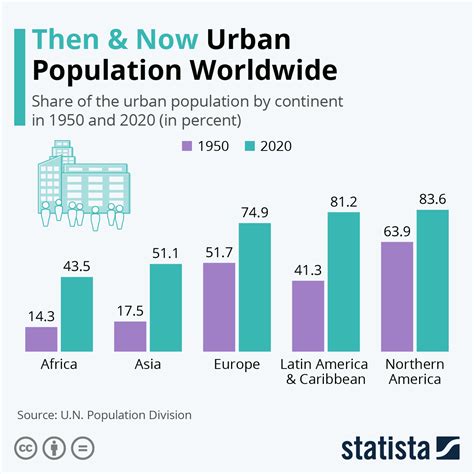urban population in world|World Urbanization Prospects : Baguio The Population Division of the Department of Economic and Social Affairs of the United Nations has been issuing for several decades revised estimates and projections of the . Consultez les pronostics sur la NBA avec Odds Shark. Parier et gagnez sur le basketball américain grace aux conseils de nos experts! . Pred. Score / ML Pick. NY 107.6 +175. BOS 111.7-210. Spread Pick +5-110-5-110. Total Pick. U 221.5-110. O 221.5-110. Sponsored Picks. WIN% Spread Bet Total Bet. Doc's Premium Picks. New York NY Boston BOS .Find out what works well at Negros Women for Tomorrow Foundation, Inc. from the people who know best. Get the inside scoop on jobs, salaries, top office locations, and CEO insights. Compare pay for popular roles and read about the team’s work-life balance. Uncover why Negros Women for Tomorrow Foundation, Inc. is the best company for you.

urban population in world,United Nations Population Division. World Urbanization Prospects: 2018 Revision.It is now widely accepted that the future is urban. Over 55 percent of the world’s .World Urbanization Prospects The urban population of the world has grown rapidly from 751 million in 1950 to 4.2 billion in 2018. Asia, despite its relatively lower level of urbanization, is home to 54% of the world’s.urban population in world World Urbanization Prospects The Population Division of the Department of Economic and Social Affairs of the United Nations has been issuing for several decades revised estimates and projections of the .
This dataset is derived from the World Urbanization Prospects, providing comprehensive data on global urbanization trends, including population figures, urban .
Statistical concept and methodology: Urban population refers to people living in urban areas as defined by national statistical offices. The indicator is calculated .
It is now widely accepted that the future is urban. Over 55 percent of the world’s population lived in urban areas in 2018; by 2050, this proportion will grow to two-.World urban population for 2020 was 4,383,122,617, a 1.8% increase from 2019. World urban population for 2019 was 4,305,573,895, a 1.87% increase from 2018. Urban .
In 2020, 56.2 percent of the world population was urban. Half of these people lived in towns of less than 500,000 inhabitants. The percent of people living in urban areas has risen in every content.

• The urban population of the world has grown rapidly since 1950, having increased from 751 million to 4.2 billion in 2018. Asia, despite being less urbanized than most other .
Urban land area. Urban policies that respond to population dynamics. Urban population vs. female labor force participation rate. Total urban and rural population, given as estimates to 2023, and UN projections .

The world's urban population has grown rapidly from 751 million in 1950 to 4.46 billion in 2021 and will grow to 6.68 billion by 2050, adding about 2.22 billion people to urban areas. 90% of the projected growth of the world's urban population between 2021 and 2050 will occur in Asia and Africa. The world's rural population has grown slowly .
urban population in world The world's urban population has grown rapidly from 751 million in 1950 to 4.46 billion in 2021 and will grow to 6.68 billion by 2050, adding about 2.22 billion people to urban areas. 90% of the projected growth of the world's urban population between 2021 and 2050 will occur in Asia and Africa. The world's rural population has grown slowly . Population is represented by maps of total, urban, rural population and population density as well as built-up area. The period covered is 10 000 BCE to 2023 CE. Spatial resolution is 5 arc minutes (approx. 85 km2 at the equator), the files are in ESRI ASCII grid format. Retrieved on.
Overall, more people in the world have lived in urban settings than in rural setting since 2010. In 2020, 56.2 percent of the world population was urban. Half of these people lived in cities of .Urban areas are already home to 55 per cent of the world’s population, and that figure is expected to grow to 68 per cent by 2050. . this Report comes at a time when world events create ever more dynamic environments for urban actors. Although of the world has lifted the public health restrictions and border closures that made COVID-19 such .• The urban population of the world has grown rapidly since 1950, having increased from 751 million to 4.2 billion in 2018. Asia, despite being less urbanized than most other regions today, is home to 54 per cent of the world’s urban population, followed by Europe and Africa (13 per cent each). • Growth in the urban population is driven .In 2007, urban and rural populations were almost exactly equal at 3.33 billion each. In 2016, urban populations increased to 4.4 billion; while the world's rural population had increased only marginally to 3.4 billion. The UN figures are the most widely referenced and cited on global urbanization.Today, population growth largely means urban population growth. UN projections show that the world’s rural population has already stopped growing, but the world can expect to add close to 500 million urbanites in the next 15 years, and 2 billion by 2050. How the world meets the challenge of sustainable cities will be intimately tied to the urbanization .
urban population in world|World Urbanization Prospects
PH0 · World Urbanization Prospects 2018
PH1 · World Urbanization Prospects
PH2 · World Urban Population 1960
PH3 · Urbanization
PH4 · Urban population (% of total population)
PH5 · Share of the population living in urban areas
PH6 · How has the world's urban population changed?
PH7 · Demographic Trends and Urbanization
PH8 · 68% of the world population projected to live in urban areas by 2050
PH9 · 68% of the world population projected to live in urban